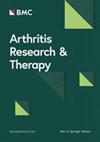Long-term outcome of a treat-to-target strategy in late-onset rheumatoid arthritis with chronic lung disease: 5-year results of a prospective observational study
IF 4.9
2区 医学
Q1 Medicine
引用次数: 0
Abstract
Controlling disease activity and improving physical function would be more difficult in patients with late-onset rheumatoid arthritis (LORA) who have chronic lung disease (CLD) at baseline. Our aim was to evaluate 5-year outcomes of following a treat-to-target (T2T) strategy targeting low disease activity (LDA) in LORA with CLD. Data from 197 methotrexate (MTX)-naïve LORA patients (mean age 74.4 years) from a prospective, monocentric registry were analyzed. Patients were treated with MTX if they had one or more poor prognostic features. If they had interstitial lung disease (ILD), tacrolimus could be administered instead of MTX at the discretion of the attending physician. If patients exhibited no response according to the European League Against Rheumatism criteria at week 12 or had not achieved LDA by week 24, biological disease-modifying antirheumatic drugs (bDMARDs) were started targeting LDA. The primary outcomes were the 5-year simplified disease activity index (SDAI) remission and Health Assessment Questionnaire Disability Index (HAQ-DI) ≤ 0.5 by non-responder imputation analysis. Secondary outcomes were serious adverse events (SAEs). Of the 197 LORA patients, 47 had CLD at baseline. The proportion of patients using MTX at baseline was significantly lower in those with than without CLD. Tacrolimus was initiated in 25.5% of the CLD group. The proportion of patients on bDMARDs was higher in those with CLD at year 5. Achievement of SDAI remission at year 5 was 29.8% in patients with CLD and 44.0% in those without CLD (p = 0.555). Achievement of HAQ-DI ≤ 0.5 at year 5 was 36.2% and 45.3% in patients with and without CLD, respectively (p = 0.939). Non-adherence to T2T due to comorbidities or adverse events was observed in 34.0% and 18.7% of the patients with and without CLD, respectively (p = 0.027). Infections requiring hospitalization, deterioration of extra-articular manifestations and fractures were more frequently reported as SAEs in patients with CLD, and multivariable analysis showed that patients with CLD had a higher risk of developing these SAEs (adjusted hazard ratio:2.53, 95% CI 1.60–4.00, p < 0.001). For LORA patients with CLD, the T2T strategy is effective, but comorbidities and SAEs make the implementation of the T2T more difficult.迟发性类风湿关节炎伴慢性肺部疾病的靶向治疗策略的长期结果:一项前瞻性观察性研究的5年结果
控制疾病活动和改善身体功能对于基线时患有慢性肺部疾病(CLD)的迟发性类风湿关节炎(LORA)患者更为困难。我们的目的是评估针对低疾病活动性(LDA)的LORA合并CLD的治疗-目标(T2T)策略的5年结果。来自前瞻性单中心登记的197例甲氨蝶呤(MTX)-naïve LORA患者(平均年龄74.4岁)的数据进行了分析。如果患者有一个或多个不良预后特征,则使用甲氨蝶呤治疗。如果他们有间质性肺疾病(ILD),他克莫司可以代替MTX在主治医生的判断。如果患者在第12周没有根据欧洲抗风湿病联盟的标准表现出反应,或者在第24周没有达到LDA,则开始针对LDA使用生物疾病改善抗风湿药物(bDMARDs)。主要结局为5年简化疾病活动性指数(SDAI)缓解和健康评估问卷残疾指数(HAQ-DI)≤0.5。次要结局为严重不良事件(SAEs)。在197例LORA患者中,47例基线时患有CLD。有CLD的患者在基线时使用MTX的比例明显低于没有CLD的患者。25.5%的CLD组患者开始使用他克莫司。在第5年患有CLD的患者中,bdmard患者的比例更高。CLD患者5年SDAI缓解率为29.8%,无CLD患者为44.0% (p = 0.555)。CLD患者5年HAQ-DI≤0.5的成功率分别为36.2%和45.3% (p = 0.939)。合并CLD和未合并CLD的患者中,因合并症或不良事件而未坚持T2T的比例分别为34.0%和18.7% (p = 0.027)。在CLD患者中,需要住院治疗的感染、关节外表现恶化和骨折更常被报道为SAEs,多变量分析显示,CLD患者发生这些SAEs的风险更高(校正风险比:2.53,95% CI 1.60-4.00, p < 0.001)。对于LORA合并CLD的患者,T2T策略是有效的,但合并症和SAEs使T2T的实施更加困难。
本文章由计算机程序翻译,如有差异,请以英文原文为准。
求助全文
约1分钟内获得全文
求助全文
来源期刊

Arthritis Research & Therapy
RHEUMATOLOGY-
CiteScore
8.60
自引率
2.00%
发文量
261
审稿时长
14 weeks
期刊介绍:
Established in 1999, Arthritis Research and Therapy is an international, open access, peer-reviewed journal, publishing original articles in the area of musculoskeletal research and therapy as well as, reviews, commentaries and reports. A major focus of the journal is on the immunologic processes leading to inflammation, damage and repair as they relate to autoimmune rheumatic and musculoskeletal conditions, and which inform the translation of this knowledge into advances in clinical care. Original basic, translational and clinical research is considered for publication along with results of early and late phase therapeutic trials, especially as they pertain to the underpinning science that informs clinical observations in interventional studies.
 求助内容:
求助内容: 应助结果提醒方式:
应助结果提醒方式:


